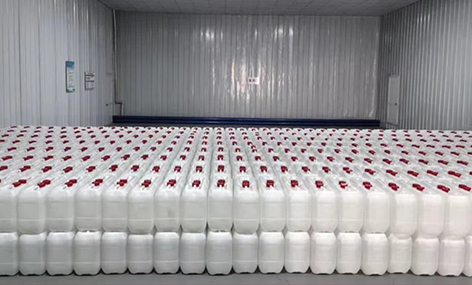
12 月 . 03, 2024 18:05 Back to list
difference between glacial acetic acid and vinegar
Understanding the Difference Between Glacial Acetic Acid and Vinegar
Acetic acid is a fundamental compound in the chemical world, known for its pungent smell and sour taste. It is a key ingredient in various products, from food items to industrial applications. However, acetic acid exists in different forms, the most notable being glacial acetic acid and vinegar. Understanding the differences between these two forms of acetic acid is essential, as they serve distinct purposes and have unique characteristics.
Glacial Acetic Acid The Pure Form
Glacial acetic acid refers to pure acetic acid that is typically anhydrous (contains little to no water). It is named glacial because it solidifies just below room temperature, forming ice-like crystals. With a chemical formula of CH₃COOH, glacial acetic acid is a colorless, flammable liquid with a strong odor and an intense acidity that can be corrosive. The density of glacial acetic acid is significantly higher than that of water, and it has a boiling point of around 118 °C (244 °F).
One of the most common uses of glacial acetic acid is in the chemical industry, where it serves as a key raw material for the synthesis of various chemicals, including acetate esters, acetic anhydride, and various polymers. Its high purity and concentration make it suitable for laboratory applications and industrial processes where precision is crucial. Glacial acetic acid is also used in the production of food preservatives and flavorings, albeit in more controlled environments.
Vinegar A Diluted Solution
On the other hand, vinegar is a diluted solution of acetic acid, typically containing about 4-8% acetic acid by volume, with the remaining percentage made up of water and trace compounds that contribute to its flavor. Vinegar is commonly used in culinary applications, not only as a condiment but also as a preservative in pickling and fermentation processes. The acidity in vinegar, while less concentrated than in glacial acetic acid, is still sufficient to provide its characteristic sour taste and preservative qualities.
Vinegar also contains several additional compounds, including flavoring agents, vitamins, and minerals, depending on the source of the vinegar. For instance, apple cider vinegar has additional nutrients derived from apples, while balsamic vinegar is known for its rich flavor stemming from the grapes used in its production. The presence of these compounds contributes to vinegar's versatility in cooking, making it a staple in many cuisines around the world.
difference between glacial acetic acid and vinegar

Key Differences Between Glacial Acetic Acid and Vinegar
1. Concentration The most significant difference between glacial acetic acid and vinegar is their concentration of acetic acid. Glacial acetic acid is nearly pure (99%+), while vinegar consists of only 4-8% acetic acid.
2. Physical State Glacial acetic acid can solidify below room temperature, while vinegar remains in a liquid state at standard temperatures.
3. Uses Glacial acetic acid is primarily used in industrial applications and laboratories, while vinegar is widely used in cooking, food preservation, and as a cleaning agent around the home.
4. Safety Due to its high concentration, glacial acetic acid can be hazardous and requires careful handling, often necessitating the use of protective equipment. In contrast, vinegar is safe for consumption and common use in households.
5. Flavor and Composition Vinegar contains various flavor compounds and nutrients that enhance its taste and properties, while glacial acetic acid is a pure chemical without additional components.
Conclusion
In summary, while both glacial acetic acid and vinegar contain acetic acid, they differ significantly in concentration, uses, physical properties, and safety profiles. Understanding these differences is crucial for selecting the appropriate form of acetic acid for specific applications, whether in cooking or industrial processes. While vinegar adds flavor and preservation to our meals, glacial acetic acid plays a vital role in the production of chemicals and materials we use daily. Recognizing these distinctions not only enhances our culinary experiences but also enriches our knowledge of the various substances that shape our lives.
